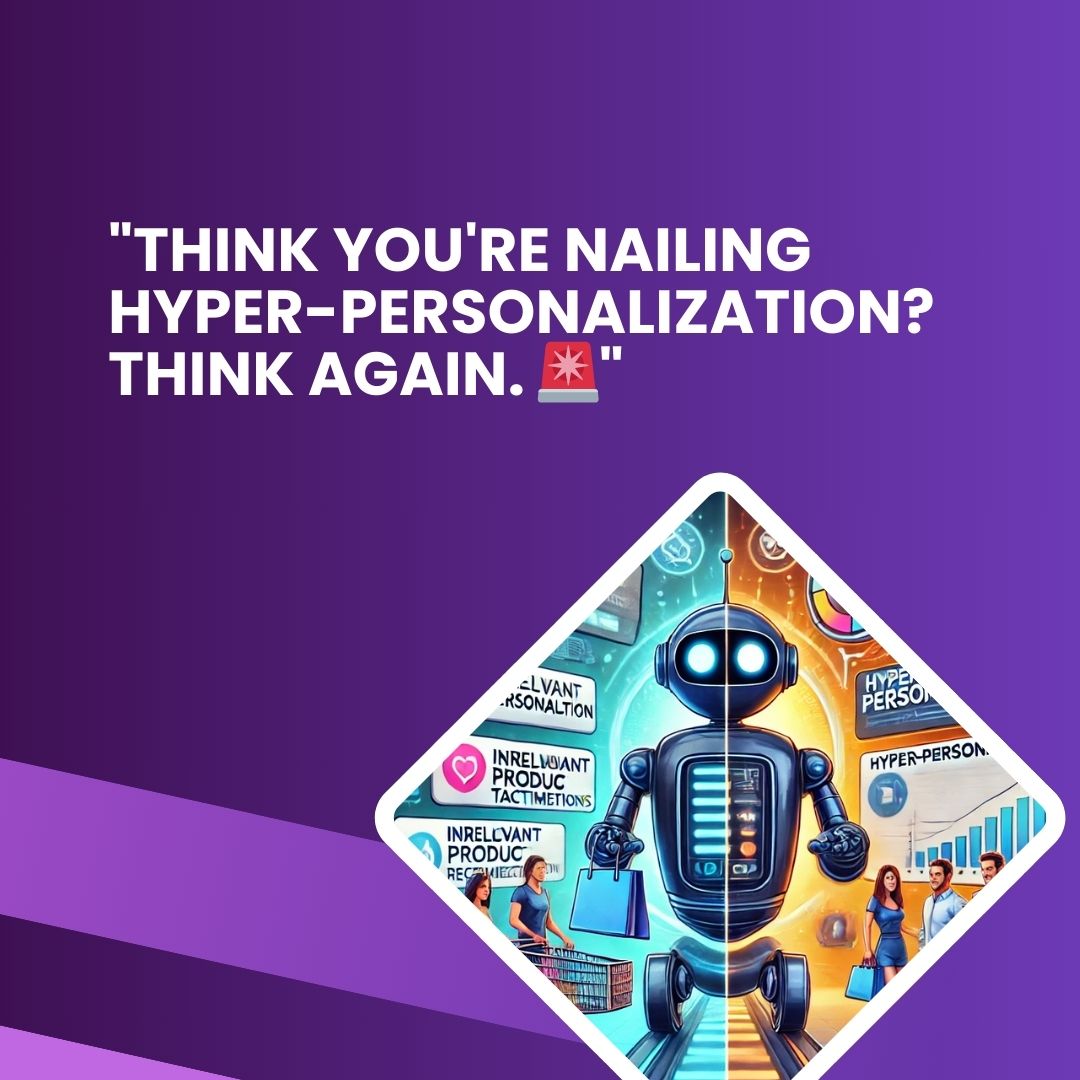Hyper-Personalization in E-Commerce: Why Most Companies Are Still Getting It Wrong

Most e-commerce companies think they're nailing hyper-personalization. Spoiler alert: they’re not. While many brands add customers' names to emails or recommend products based on browsing history, this surface-level personalization is far from the revolutionary experience today’s consumers expect. If you think your personalization strategy is cutting-edge, it might be time to rethink.
In this blog, we’ll explore why hyper-personalization remains elusive for most businesses and how to truly master it—using data, technology, and a deep understanding of your customers' needs.
The Problem: Why Most Efforts Fall Short
Let’s start with the obvious question: if hyper-personalization is the holy grail of e-commerce, why aren’t more brands succeeding?
1. Data Overload, But Insight Drought
E-commerce companies collect terabytes of customer data, but how much of it drives meaningful actions? Many brands fall into the trap of analysis paralysis—sitting on mountains of data without transforming it into actionable insights. Worse, they focus on the wrong metrics, leading to generic campaigns that miss the mark.
2. One-Size-Fits-All Technology
Personalization engines promise the world but often deliver "good enough" results. These systems are built on rigid algorithms that lack the nuance to deliver truly tailored experiences. The result? Recommendations and campaigns that feel more robotic than human.
3. Failure to Scale
While personalization at a small scale is manageable, achieving it across millions of customers—each with unique preferences, behaviours, and needs—is a different beast. Most brands struggle to maintain relevance as they scale their operations.
The Solution: Building a True Hyper-Personalization Engine
Hyper-personalization isn’t just a buzzword—it’s a comprehensive strategy. Here’s how to do it right:
Step 1: Start with Micro-Segmentation
Traditional segmentation groups customers into broad categories like "frequent buyers" or "price-sensitive shoppers." Hyper-personalization goes deeper, creating micro-segments based on granular data points such as:
- Time of day they shop.
- Channels they prefer (e.g., mobile, desktop).
- Behavioural triggers like abandoned carts or repeated views of specific products.
For example, an apparel brand might identify a micro-segment of customers who shop for activewear on weekday mornings via mobile devices. Campaigns targeting this group should align with these habits.
Step 2: Leverage Predictive Analytics
Predictive analytics uses historical data to anticipate future behaviours. It allows you to:
- Predict what products a customer is likely to purchase next.
- Identify churn risks and intervene with targeted offers.
- Tailor messaging to align with upcoming events (e.g., birthdays, anniversaries).
Amazon excels here, using predictive algorithms to suggest not just what you want today but what you’ll need tomorrow.
Step 3: Invest in Real-Time Personalization
Static campaigns are dead. To succeed, you need dynamic systems capable of adapting to customer behaviour in real time. Examples include:
- Offering instant discounts when a customer hesitates on a purchase.
- Changing homepage banners based on recent browsing history.
- Sending push notifications triggered by in-the-moment actions.
Brands like Spotify and Netflix excel at this, curating playlists and shows that reflect users’ ever-changing preferences.
Step 4: Humanize the Experience
Automation and AI are powerful tools, but they must feel human. This means:
- Crafting conversational, personalized messages (e.g., “We noticed you loved this; here’s something we think you’ll adore”).
- Using customer names and referencing specific actions without overdoing it.
- Avoiding creepy personalization (e.g., “We saw you searching for weight loss products at 2 a.m.”).
Real-World Lessons: Hyper-Personalization in Action
To truly understand hyper-personalization, let’s look at real-world examples:
- Sephora: This beauty retailer leverages its app and loyalty program to offer personalized recommendations. Through data collected from purchase history, in-app quizzes, and customer profiles, Sephora provides tailored product suggestions and exclusive rewards, driving significant customer loyalty.
- Starbucks: Using its mobile app, Starbucks employs predictive analytics to suggest food and beverage items based on time of day, weather, and previous purchases. Their personalized offers and rewards system have been instrumental in increasing app engagement and repeat purchases.
- Spotify: Spotify’s "Wrapped" campaign is a masterclass in hyper-personalization. By analyzing user listening habits throughout the year, Spotify creates a unique summary for each user, making them feel seen and understood while driving massive social media engagement.
- Nike: Nike takes hyper-personalization a step further with its NikePlus membership program. Through activity data from wearable devices and app usage, they offer custom workout plans, early access to product launches, and even personalized product designs.
Why Behavioural Analytics Is Key to Hyper-Personalization
The examples above underscore one thing: hyper-personalization is impossible without understanding customer behaviour. This is where behavioural analytics tools like Behaviour Code come in. These platforms empower businesses to:
- Track Every Interaction: Map the complete customer journey across platforms, identifying key moments of influence.
- Identify Trends and Patterns: Understand what drives conversions, engagement, and loyalty.
Behaviour Code, for instance, offers deep behavioural insights tailored to the needs of e-commerce businesses and others. By integrating its tools, companies can:
- Transition from broad segmentation to true one-to-one personalization.
- Predict customer needs with unmatched accuracy.
- Scale hyper-personalized campaigns without losing relevance.
Checklist for CXOs: Mastering Hyper-Personalization
Here’s a quick checklist to guide your efforts:
- Audit Your Data: Ensure you’re collecting the right data and using it effectively.
- Adopt Micro-Segmentation: Move beyond broad demographics to create precise customer profiles.
- Leverage Behavioural Analytics Tools: Invest in platforms like Behaviour Code to unlock actionable insights.
- Enable Real-Time Personalization: Build systems that adapt instantly to customer behaviour.
- Test and Iterate: Continuously refine your personalization efforts based on performance data.
Hyper-personalization isn’t just the future of e-commerce; it’s the present. By committing to a bold, data-driven approach and leveraging tools like Behaviour Code, you can stand out in a crowded marketplace—and truly connect with your customers on a deeper level.
Popular Blogs

The Secret to Turning First-Time Shoppers into Repeat Buyers
